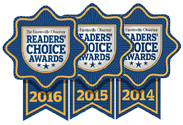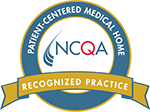Pediatric Asthma: Understanding How to Help Kids Breathe Easier
We often don’t think about breathing until it becomes a struggle. For children living with asthma, that struggle can feel like a tight squeeze on their chest, leading to shortness of breath, persistent coughing, and that telltale wheezing sound.
Pediatric asthma is common, especially in young children, as they are naturally smaller than adults, making them more susceptible to inflammation when illness or allergies strike.
As parents, recognizing the signs of pediatric asthma is crucial. However, getting an accurate diagnosis can sometimes be challenging because these symptoms are similar to other common childhood illnesses. To help, we’ve compiled answers to the five most frequent questions we receive about pediatric asthma:
1. What are the early warning signs of pediatric asthma?
Asthma symptoms in children often first appear in the early years of life. These symptoms can develop suddenly or linger for days or even weeks. A key indicator of potential asthma is the recurring nature of these symptoms, especially when they seem to flare up in response to specific triggers like allergens. Be vigilant for these common signs:
- Persistent coughing, particularly at night or early morning.
- Noticeable difficulty breathing or unusually rapid breathing.
- Frequent chest colds that seem to linger or worsen.
- A wheezing or whistling sound when your child exhales.
- Complaints of chest tightness or a feeling of pressure.
2. My child coughs a lot when running around or playing sports. Could this be asthma?
It’s possible. This could indicate exercise-induced bronchoconstriction (EIB), sometimes called exercise-induced asthma (EIA). In this condition, asthma symptoms happen during or shortly after physical activity. Watch for these clues:
- Coughing spells that start after your child comes in from playing outside.
- An inability to keep up with peers during physical activities, needing to stop frequently due to shortness of breath.
- Getting winded very easily or tiring quickly during exercise.
Symptoms of EIB usually begin within 5 to 15 minutes of starting exercise. Interestingly, some children may not experience symptoms until they stop the activity. Cold, dry air can often worsen EIB symptoms by narrowing the small airways in the lungs (bronchioles), making breathing harder. Depending on your child’s symptoms, our providers may recommend a medication taken before exercise or a longer-term daily medicines to help control symptoms.
3. What factors contribute to a child developing asthma?
While the exact cause of asthma remains unknown, we understand that it’s likely a combination of factors. Some children have a genetic predisposition to developing asthma, which means it may run in the family. Environmental factors can also play a role. Some common triggers that can cause asthma symptoms to flare up include:
- Allergens: These can include dust mites, pet dander, mold, pollen from trees and grasses, and cockroach droppings.
- Respiratory Infections: Viral infections like the common cold or flu can irritate the airways and trigger asthma symptoms.
- Environmental Irritants: Exposure to cigarette smoke (including secondhand smoke), air pollution, strong fragrances (like perfumes and cleaning products), and cold air can all irritate the lungs.
- Exercise: Physical activity can trigger asthma symptoms in some children.
- Emotional Stress: Experiencing strong emotions can contribute to asthma flare-ups in some people (sadness, tantrums, anger, etc.).
4. Will my child eventually outgrow their asthma?
Asthma is typically a lifelong condition. However, asthma symptoms can often improve as children get older, particularly if triggers are effectively avoided or minimized. Some children may experience longer periods without significant symptoms, leading some parents to believe that their child has outgrown asthma. It’s important to continue working with your pediatrician to monitor your child’s condition and adjust their management plan as needed, even if their symptoms seem to lessen.
5. What is the most effective way to manage my child’s asthma?
Currently, there is no cure for asthma. However, the symptoms can be effectively managed, allowing children with asthma to live active lives. The cornerstone of asthma management involves:
- Avoiding or Limiting Triggers: It is important to identify asthma triggers and minimize your child’s exposure to them.
- Medication: Medications play a vital role in controlling asthma. These may include:
- Quick-Relief Medications (Rescue Inhalers): These medications quickly open the airways during an asthma attack. If you start using albuterol for your child multiple times a week, see your child’s pediatric provider sooner.
- Long-Term Control Medications: These medications are typically taken every day to reduce airway inflammation and prevent asthma symptoms from occurring. If you are on long-term control medication, your pediatrician might ask you to follow up more frequently, like every 3-4 months.
Treatment will vary based on the frequency and severity of symptoms. Our pediatric providers will work closely with you to develop an asthma treatment plan that outlines your child’s triggers, medications, and steps to take during an asthma flare-up.
Early intervention is key to managing childhood asthma. If you have concerns that your child may have asthma, please schedule an appointment with their pediatric provider. We are here to help your child breathe easier and thrive!







